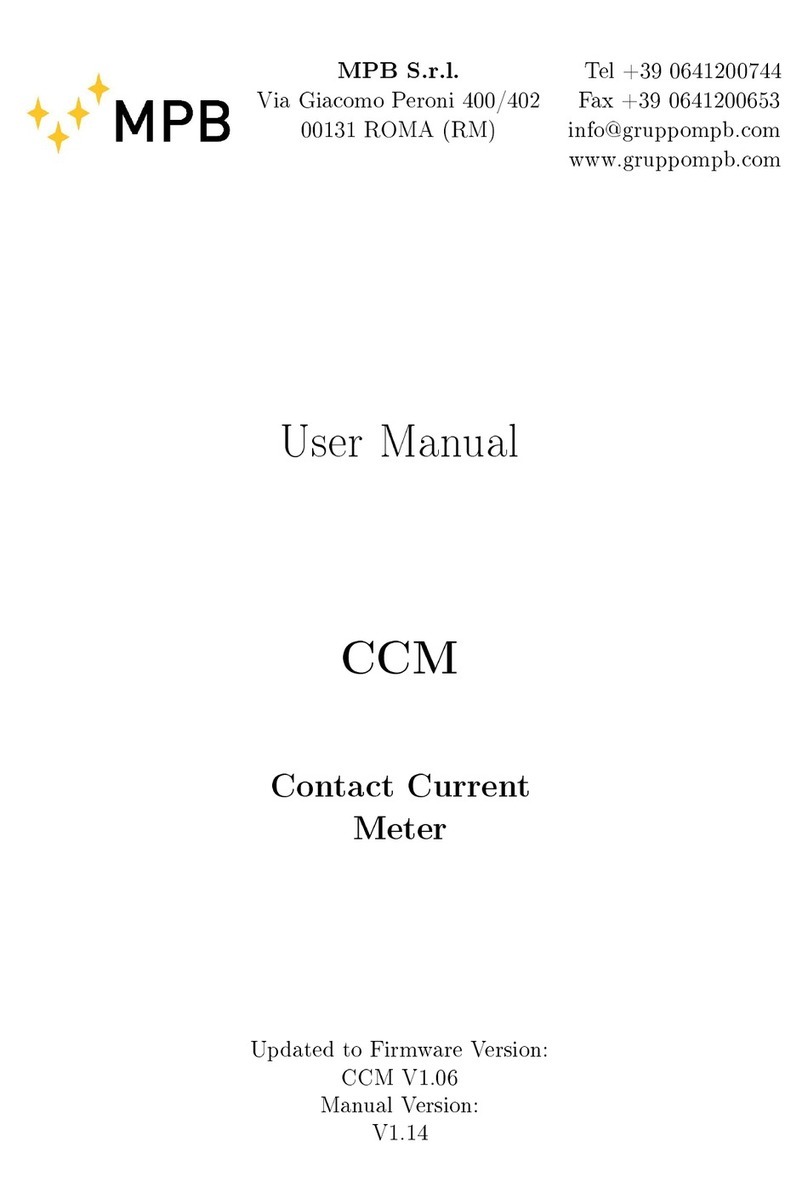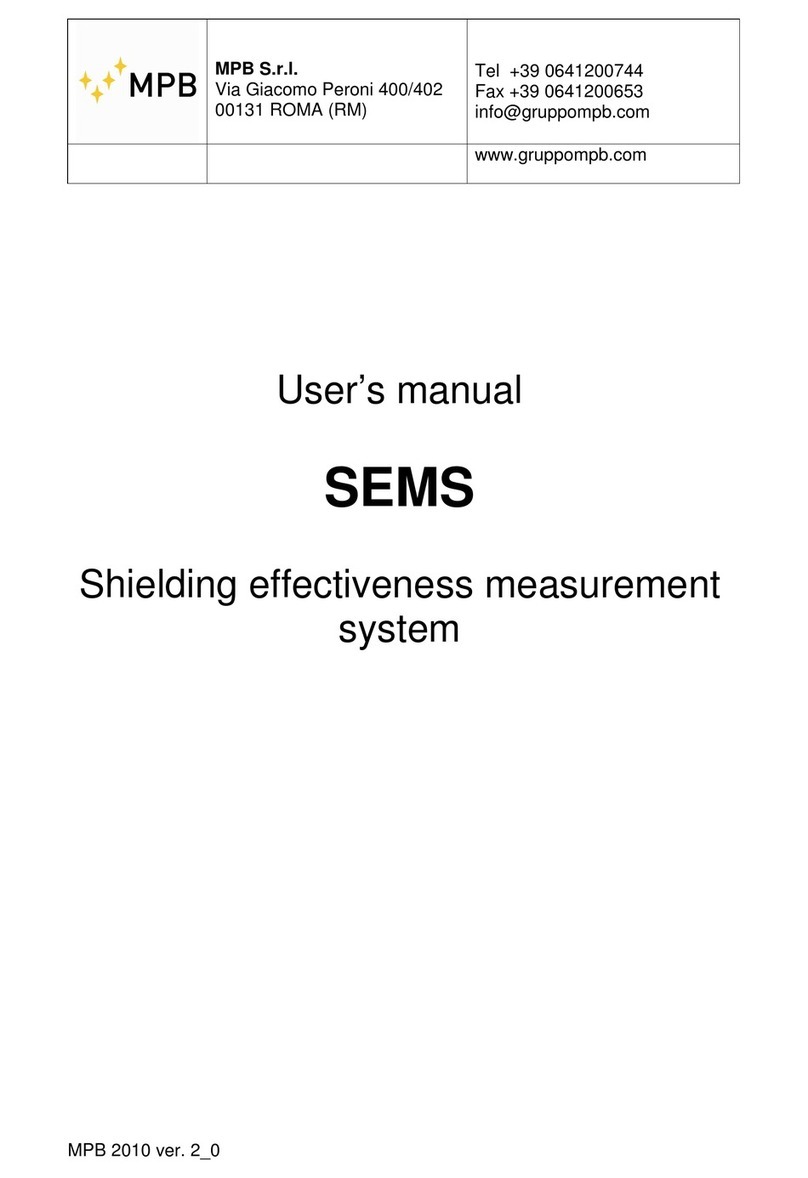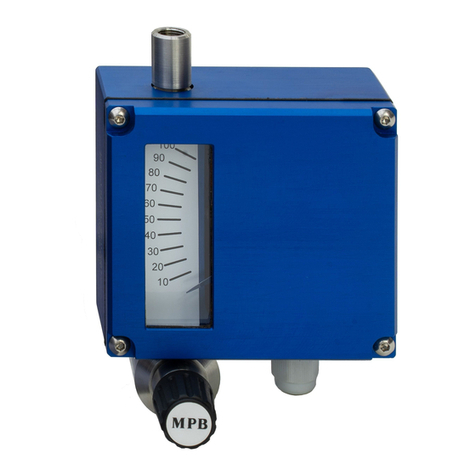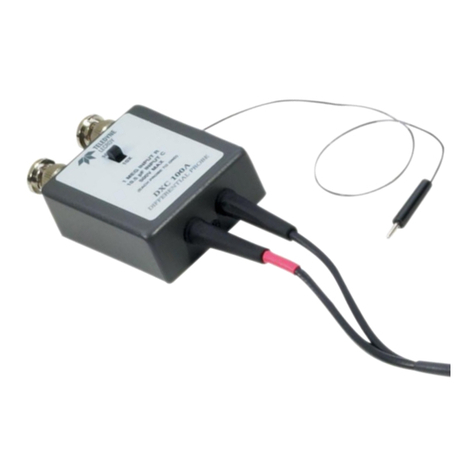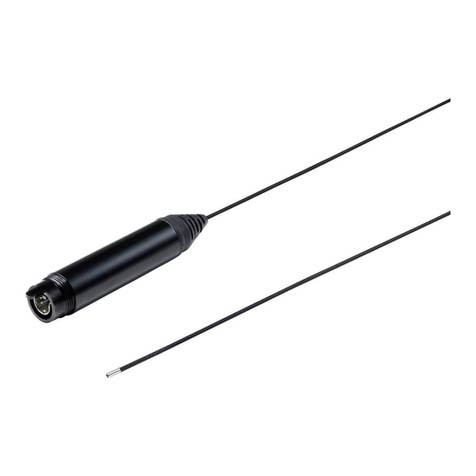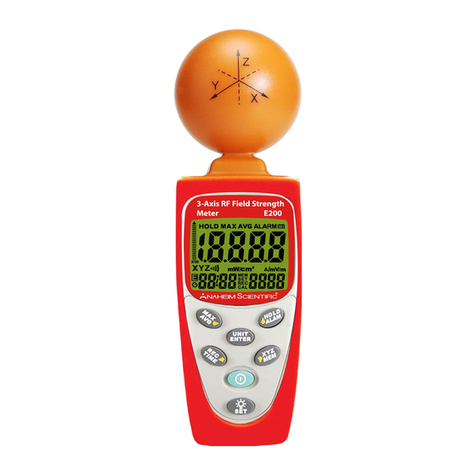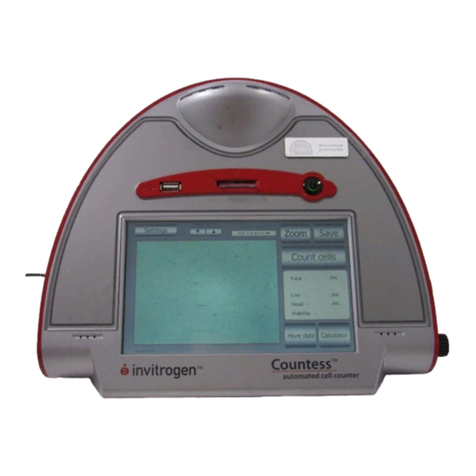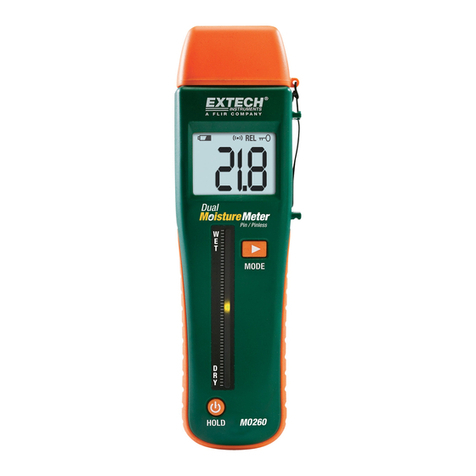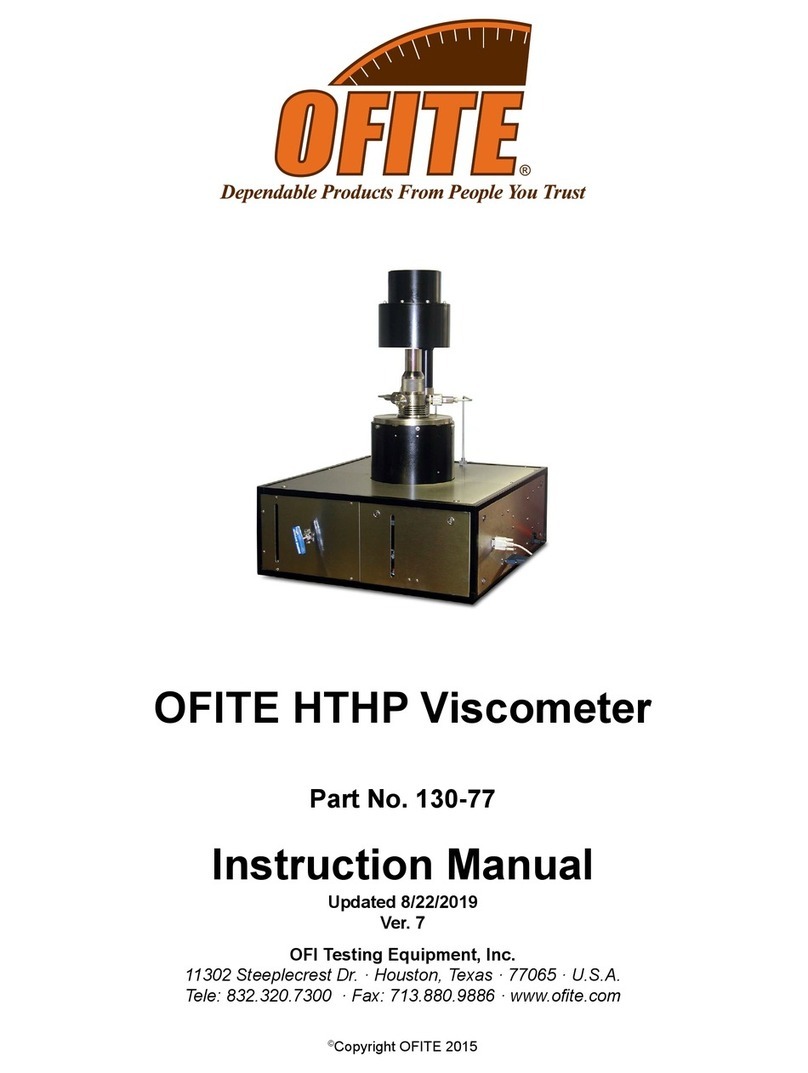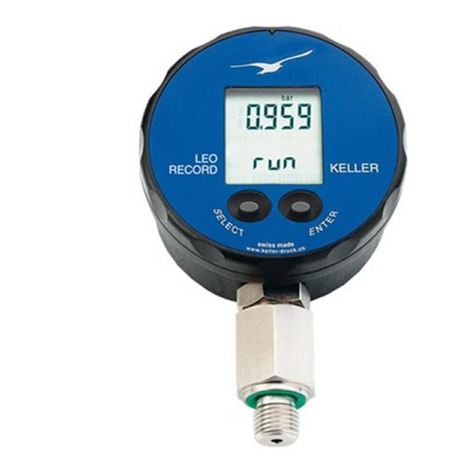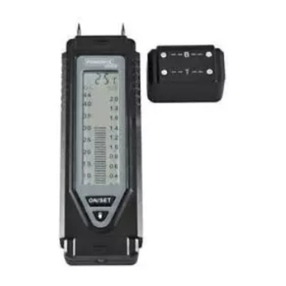MPB SEMS User manual

MPB S.r.l.
Via Giacomo Peroni 400/402
00131 Rome - Italy
Tel +39 0641200744
Fax +39 0641200653
info@gruppompb.com
www.gruppompb.com
MPB 2014 ver. 2_9
User’s manual
SEMS & SEMS LIGHT
Shielding Effectiveness Measurement
System
Updated to the software Version:
SEMS RX 1.32
SEMS TX 1.05
SEMS PC Utility 1.26

USER’S MANUAL
S E M S
- 2 -
SAFETY NOTE
Read before using the product
MPB works to provide to its customers the best safety conditions available
complying with the current safety standards.
The instrumentation described in this manual has been produced, tested and left the
factory in conditions that fully comply the European standards.
To maintain it in safe conditions and ensure the correct use, these general
instructions must be fully understood and applied before using the product.
The SEMS is designed for industrial environment and laboratories and should be
used by skilled staff only.
MPB disclaims responsibility for a different use of the device.

USER’S MANUAL
S E M S
- 3 -
Conformity Certificate
(in accordance with the ISO/IEC 17050-1)
This is to certify that the product: SEMS / SEMS LIGHT
(Measurement system of shielding effectiveness)
complies with the following European Standards:
Safety: CEI EN 61010-1 (2002)
EMC: EN 61326-1 (2007)
This product complies with the requirements of the Low Voltage Directive
2006/95/CE, and with the EMC Directive 2004/108/CE.
MPB S.r.l.

USER’S MANUAL
S E M S
- 4 -
Index
1.
Gener
al information
Pag.
1.1. Introduction
1.2. System description
1.3. Composition of the system and optional accessories
1.4. Receiver front panel
1.5. Transmitter front panel
1.6. Receiver/transmitter rear panel
1.7. Technical specifications
5
5
6
8
8
9
10
2.
Operating principle
2.1. SEMS receiver
2.2. SEMS transmitter
2.3. SEMS system
2.4. Power saving and recalibration
11
11
12
12
3.
System use and operation
3.1. Turn on menu
3.2. Std Menu
3.2.1. Cal Menu
3.2.2. High Dynamic (HiDyn)
3.2.3. Show Menu
3.2.4. Meas Menu
3.2.5. Menu Sniff
3.3. WIZ Menu
3.3.1 Measurements using wizard
3.4. STP Menu
3.5. Measuring the shielding attenuation
3.6. Calibration using CalKit
3.7. Measurement with Rod antennas mod. R1
3.8.Unconnected mode
3.9. Prequiet mode
3.10.SEMS Light
13
13
14
16
20
21
23
24
27
31
33
34
36
37
44
46
4.
SEMS PC Utility
software, controls and
functions
4.1. Installation
4.2. Connecting the instrument
4.3. Retrieving a measurement
4.4. Program a frequencies List with Scan or
table List
4.5. Working with the results
4.6. Firmware upgrade
48
49
50
54
57
58

USER’S MANUAL
S E M S
- 5 -
1. General information
1.1. Introduction
SEMS is thought to comply the raising need to test and verify the shielding
effectiveness of shielded environment in hospitals and industries.
This system allows to measure automatically with high speed and accuracy the
attenuation value of the magnetic and electric field in shielded environments.
1.2. System description
The shielding effectiveness measurement system has a transmitter and a receiver,
both of them are provided with a pair of very small antennas, to measure the
magnetic and electric field attenuation.
Contrary to today’s available systems, that measure the shielding effectiveness on
few frequency points, SEMS allows to perform a complete test on the whole
frequency ranges continuously. Another improvement compared to the standard
system is the synchronization component, TX and RX are connected by a wireless
system that allows to perform automatically the measurement minimizing the user’s
errors.
Picture n°01
SEMS System
3

USER’S MANUAL
S E M S
- 6 -
1.3. Composition of the system and optional accessories
Model
SEMS KIT 1
SEMS LIGHT
RX Unit (10kHz…300MHz) üOnly until
96MHz
TX Unit (10kHz…300MHz) üü
Biconical antennas Mod. B1 (60…300MHz) ü¡
Rod antennas Mod. R1 (1…60MHz) ¡¡
Loop antennas Mod. L1 (2…128MHz) üü
Loop antennas Mod. L2 (10kHz…4MHz) ¡¡
Loop antennas Mod. L3 for RF Leak ¡¡
Dipole antennas Mod. D1 (40…300MHz) ¡¡
RS/232 Wireless Key Bluetooth technology üü
RS232/USB cable to download memory of the
SEMS and for programming üü
Battery Charges üü
Carrying bag Mod. SEMS-CC üü
Antenna adapters N(m)-N(m) üü
Cal-Kit 4 attenuators 30 dB/each ¡¡
Cal-Kit Accredia Certificate ¡¡
Woden tripode Mod. TR-02 Hight adjustable ¡¡
Optical link Mod. LO with 20m fiber ¡¡
Software Mod. SEMS-SW üü
User’s manual onto USB key üü
Standard Calibration Certificate SEMS-STD üü
Option ¡
Loop Mod. L-2 Rod Mod.R1 Tripode Mod.TR-02-A Dipole Mod. D-1 Loop Leak Mod. L-3
Picture n°02
3

TIPS TO HAVE THE BEST
DYNAMIC
USER’S MANUAL
S E M S
DYNAMIC
WITH DIPOLE ANTENNA MODEL D1
Frequency range
[MHz]
Extended
element
200-300 0
140-240 0+1
90-180 0+1+2
70-140 0+1+2+3
40-120 0+1+2+3+4
- 7 -
WITH DIPOLE ANTENNA MODEL D1

USER’S MANUAL
S E M S
- 8 -
1.4. Receiver front panel
In the Picture below(n°03) is represented SEMS receiver front panel. It has a
display and a command keyboard.
Picture n°03
1.5. Transmitter front panel
The SEMS transmitter (Picture n° 04) has no command button but only a power
button and a led to indicate that the transmission is active, since the commands are
sent by the receiver using the wireless connection.
Picture n°04
Alphanumeric display
Keyboard
RF in 50 Ohm
N female connector
Power button
RF out 50 Ohm
N female connector
Power button
LED on when
transmission is active

USER’S MANUAL
S E M S
- 9 -
1.6. Receiver / Transmitter rear panel
The rear panels (Picture n° 05) are the same for both devices and upon them is
possible to find the serial number, the thread used for the tripod, the battery charger
connector and the RS232 interface for the wireless link.
Picture n°05
Important note: Always use the battery charger provided with the instrument to
avoid serious damages to the devices and operator’s injuries.
Important note: The battery charger must be connected to both devices (Tx and
Rx) turned off.
RS232
Serial
number
Thread insert ¼
Batte
ry charger
connector

USER’S MANUAL
S E M S
- 10 -
1.7. Technical specifications
Frequency range for TX/RX
Resolution 10 kHz…300 MHz (SEMS Light up to 96 MHz)
10 Hz
RF out (TX module)
Max output power (typical) Zout 50 Ω, N fem.
+30 dBm
RF in (RX module)
VSWR
Attenuator
Max input power
Dynamic Range
Zin 50 Ω, N fem.
< 1.2
0…20dB
110 dBuV
120 dB
IF bandwidth (RX module)3 dB bandwidth 5/150Hz
Attenuation measurement accuracy
(typical) 10 kHz…30 MHz ± 1.0 dB
30 MHz…300 MHz ± 1,5 dB
I/O interface RS232 / Wireless
Buzzer To set on attenuation level
International standard compliance MIL-Std-285 IEEE Std 299 EN 50147-1
NSA65-6
Operating temperature 0°….40°C
Battery Irreplaceable and rechargeable Li-Ion
(6 h operating time)
Antennas
Loop Mod.L-1
Loop Mod.L-2
Rood Mod. R-1
Dipole Mod. D-1
Loop Mod. L-3
Biconical Mod. B1
Frequency range 2…128 MHz
Diameter 30 cm
Frequency range 10 kHz…4 MHz
Diameter 30 cm
Frequency range 1…60 MHz
Adjustables on lenght
Frequency range 40…300 MHz
Adjustable on extension
Used for RF Leak
Frequency range 60…300 MHz
Width 35 cm
Accessories
Wooden Tripode Mod. TR-02-A
Optical Link Mod. LO
Adjustable in high
With 20 m. fiber
Calibration Set-Up and Measurement Programmable with the software
Weight and dimensions
Overall weight
Case dimensions
9,4 kg
52x43x23cm
Technical specifications may change without notice

USER’S MANUAL
S E M S
- 11 -
2. Operating principle
2.1. SEMS Receiver
The block diagram (a) below represents the SEMS receiver.
Digital
ADC
RSP
DSP
RF
IN Attenuator >
Filters >>Display
Figure a)
First of all the RF signal received by the antenna is attenuated by the attenuator
module to fit the level to the next modules specifications, subsequently we can find
the filters to select the bandwidth depending on the frequency settings. Then the RF
signal is converted by an ADC and is processed by the digital part with a RSP and a
DSP, the result will be shown on the display.
2.2. SEMS Transmitter
The block diagram below (b) represents the SEMS transmitter.
Digital
CPU
DDS
>
Doubler
>Power
amplifier
RF
OUT
Figure b)
The transmitting signal is generated using the DDS controlled by the CPU that
receives the instructions from the receiver wireless interface, this signal is
duplicated and amplified in order to achieve the necessary level to be transmitted by
the transmitting antenna.

USER’S MANUAL
S E M S
- 12 -
2.3. SEMS System
The main purpose of the SEMS is to measure the shielding effectiveness in a
shielded environment by measuring the attenuation of the electric or magnetic field.
The SEMS makes an a relative measure and not absolute
We can briefly describe the operating principle as it follows:
The transmitter generates a RF signal and irradiates it through the antenna, at a
certain distance the receiver catches the signal with an equal antenna and
measures the signal level. If we move the receiver inside the shielded environment
maintaining the same distance from the transmitter we will get a lower signal, so we
can consider the shielding attenuation the difference between the reduced and the
original signal.
Picture n°06
Example of zeroing with loop antennas
2.4. Power saving and recalibration
The SEMS has an integrated timer in both RX and TX unit for two different reasons:
the TX automatically turns off after 17 min of idle to save the battery; the RX unit
after 15 min from the last zero setting suggests to recalibrate the SEMS by
repeating the procedure.
Distance for
the zeroing
process

USER’S MANUAL
S E M S
- 13 -
3. System use and operations
3.1. Turn on menu
By pressing the power button of the RX module the device will turn on, to turn it off
press the power button for at least 4 seconds. Follow the same procedure for the TX
module.
As soon as the device is turned on, the display will show the following screenshot.
On the top right of the screen will appear a battery icon to show the charge status of
the RX module, then the TX connection on the top left will appear the TX device
battery icon.
“If the battery icon do not appear on the top left, there isn’t communication from the
units. Please check the configuration of the wireless Bluetooth” (Ind 3.5-page 32)
SEMS
FW – 1.32 27/03/14
HW-2
WIZ Std Stp
Ll ll Il ll
NOTE: As soon as the connection is established, if the red led of the wireless
devices blinks together with the yellow ones, wait until the complete switching off of
the first ones in order to let the devices synchronize and ensure the correct
functioning.
3.2. Std Menu
By pressing the Std menu button this screenshot will appear
SEMS
FW – 1.32 27/03/14
Show
Cal
Ll ll ll ll
Then pressing the relative button allows the access to Show and Cal menu.

USER’S MANUAL
S E M S
- 14 -
3.2.1. Cal Menu
Cal menu is used to perform the system zeroing process(Scan or List) or the system
calibration process(CalK)
SEMS
Ready for Measuring
Scan
List CalK
ll ll ll ll
Scan performs the system zeroing process using the standard or customized
frequency bands, by pressing the scan button we will see the following screenshot
where is possible to choose the default bands (L_Lo,L_Hi eBic) or the user’s
customized bands (Sc1,Sc2,Sc3 and Sc4)pressing the User button (customized
bands are programmed with the “SEMS PC_Utility” software)
SEMS
Ready for Measuring
L_Lo L_Hi Bic User
ll ll ll ll
The choice of the button to press depends on the different types of antennas:
L_Lo (Loop antennas Mod. L2)
L_Hi ( Loop antennas Mod. L1)
Bic (Biconical antennas Mod. B1)
By pressing the User button will appear the screenshot to choose the memorized
band:

USER’S MANUAL
S E M S
- 15 -
List performs the system zeroing process using the default or programmable
frequency list, by pressing the list button will appear a new menu where you can
select the default frequency list DFT or three programmable lists (L1, L2 eL3)
CalK performs the system calibration process using the four 30 dB attenuators
(optional accessories CAL-KIT).
NOTE: This procedure needs a wireless connection between TX and RX, you can
control the connection with the battery status on the left top of the screen of RX (will
be visible only if the connection has been successful).
Note: Never use the CalKit procedure with the charger connected
When the zeroing procedure ends the following menu will appear:
SEMS
Ready for Measuring
Sc1 Sc2 Sc3 Sc4
ll ll ll ll
SEMS
Ready for Measuring
DFT L1 L2 L3
ll ll ll ll

USER’S MANUAL
S E M S
- 16 -
3.2.2. HiDyn is a special function available only for a number max of 30 frequencies
With this mode the operator, during the zero step, is be able to understand if there is
some noise (radio frequency disturbance) at the same frequencies of the test, that
could compromise the dynamic of the measure
It’s possible make a scanning in automatic or manual mode just press the Stp menu
like show below:
SEMS
FW – 1.32 27/03/14
HW-2
BEEP
Clear
ll ll ll ll
And after the Beep button
BEEP ON 100dB
Use arrows for
10 dB step
+1 -1 ON OFF
ll ll ll ll
BEEP ON/OFF enables or disables the manual or automatic execution of the HiDyn
Function
With the arrows is possible to set the threshold of the dynamics during the test

USER’S MANUAL
S E M S
- 17 -
If for example,before zero procedure we set this value at 100 dB ( with Beep “ON”)
the operator will know immediately if this threshold of dynamic will be available for
the measure
@ 9,900001 MHz
Dynamic :85 dB
** Above Minimum **
Abort
OK
ll ll ll ll
In this example the operator will know immediately how much dynamic will be
available during the measure at the frequency of 9,900001 MHz.
Confirming with “OK” the SEMS Receiver will proceed at the next frequency through
the activation of the “Best Dynamic” function like below:
For every frequency present in the table two additional side frequencies are added:
the lower is f*0.99 (-1%) and the higher is f*1.01 (+1%)
All the frequencies are then tuned on RX unit, while the TX unit is kept OFF, and for
each the noise floor is recorded.
At the end of this step, for each triplet the frequency point which shows lower noise
floor is taken while the remaining two are discarded. In this way now a new table,
same in number of point as the original one, is created.

USER’S MANUAL
S E M S
- 18 -
You can at anytime stop the “Best Dynamic” function
Pressing the “Abort” button will show the menu below
Sems UnZeroed
Calibration Aborted
** Above Minimum **
Show
Cal
ll ll ll ll
Anyway, you can view all the values of dynamic available for each frequency point
with the command “Show”, before to start the measuring:
Sems
Ready for Measuring
Meas
Show
Cal Snif
ll ll ll ll
And after “Dyn”
Sems
Ready for Measuring
** Above Minimum **
Dyn L1-4 M1-4
H1-4
ll ll ll ll

USER’S MANUAL
S E M S
- 19 -
To view them one by one press the button NxFr ( Next frequency) or HiPk ( highest
Peak) and NxPk ( next Peak than the one displayed)
Dynamic
9.900 to 126.000
1stF NxFr HiPk NxPk
ll ll ll ll

USER’S MANUAL
S E M S
- 20 -
3.2.3. Show menu
The show menu will provide the results of the measurements performed and
previously stored
To see the saved measurements press the Show button
e.g. We will choose a measure stored in a memory named H1-4
Then we recall the H1 memory
SEMS
Ready for Measuring
Meas
Show
Cal Snif
ll ll ll ll
SEMS
Ready for Measuring
Last L1-4 M1-4 H1-4
ll Il ll ll
SEMS
Ready for Measuring
H-1 H-2 H-3 H-4
ll ll ll ll
Other manuals for SEMS
1
Table of contents
Other MPB Measuring Instrument manuals
Popular Measuring Instrument manuals by other brands
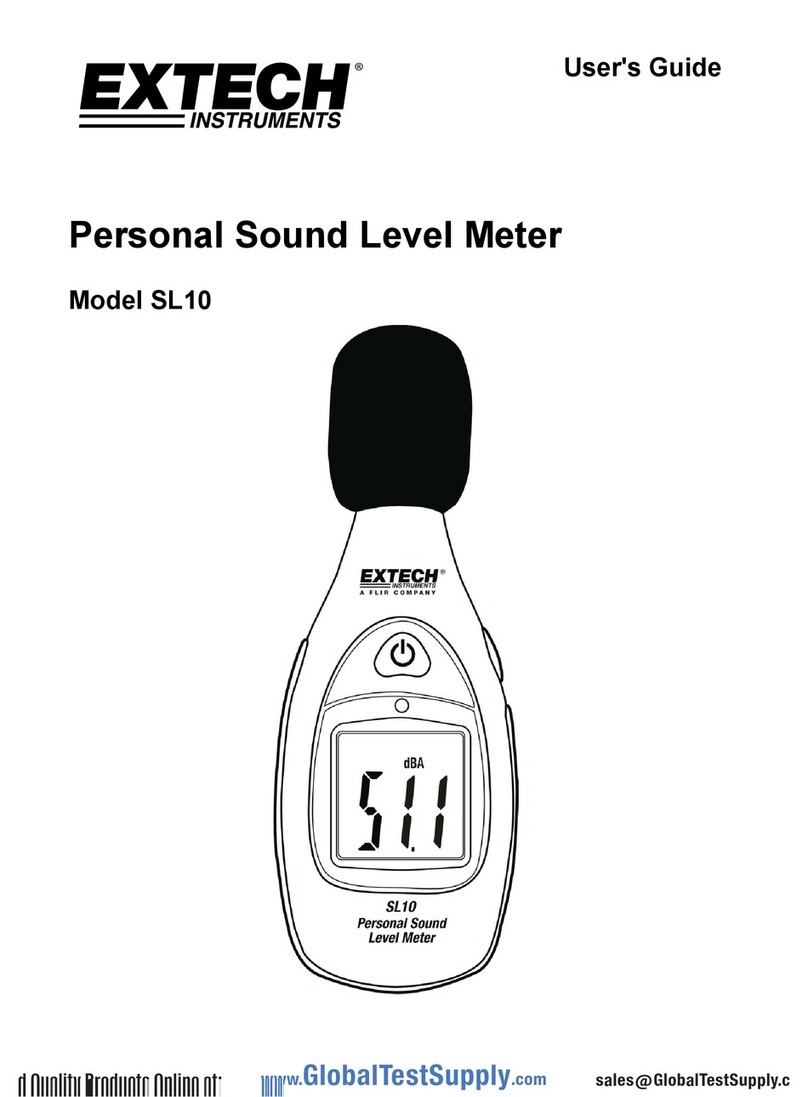
Extech Instruments
Extech Instruments SL10 user guide
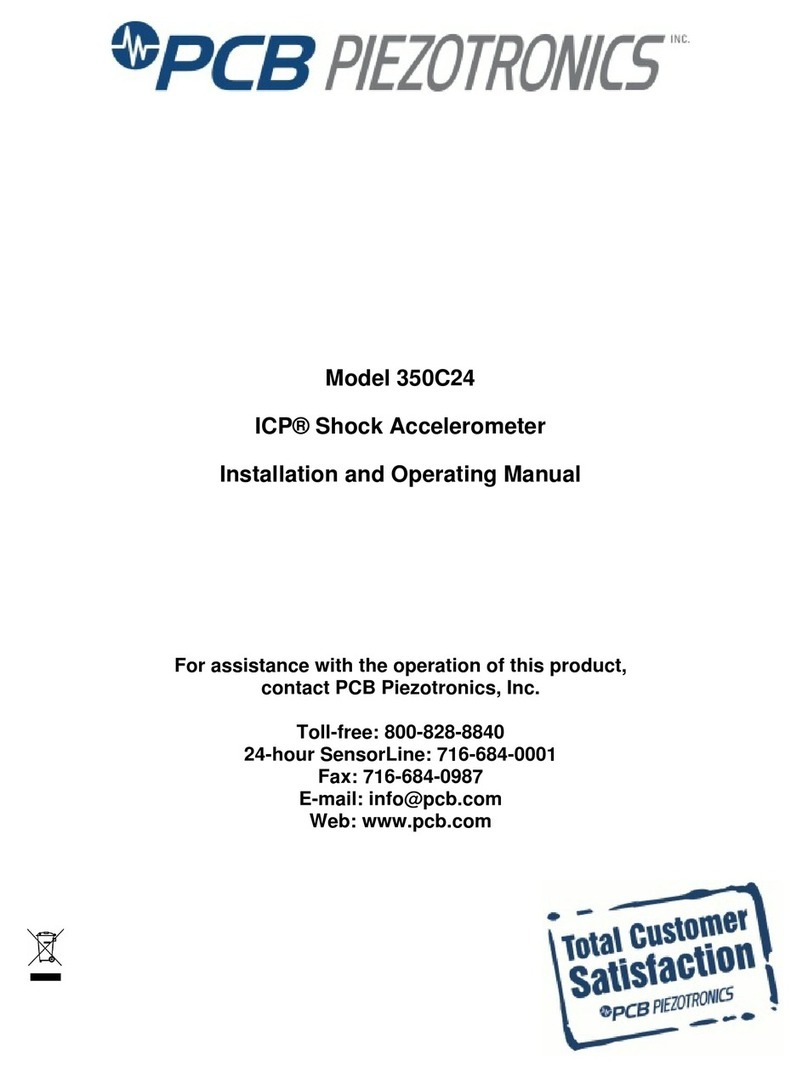
PCB Piezotronics
PCB Piezotronics ICP 350C24 Installation and operating manual
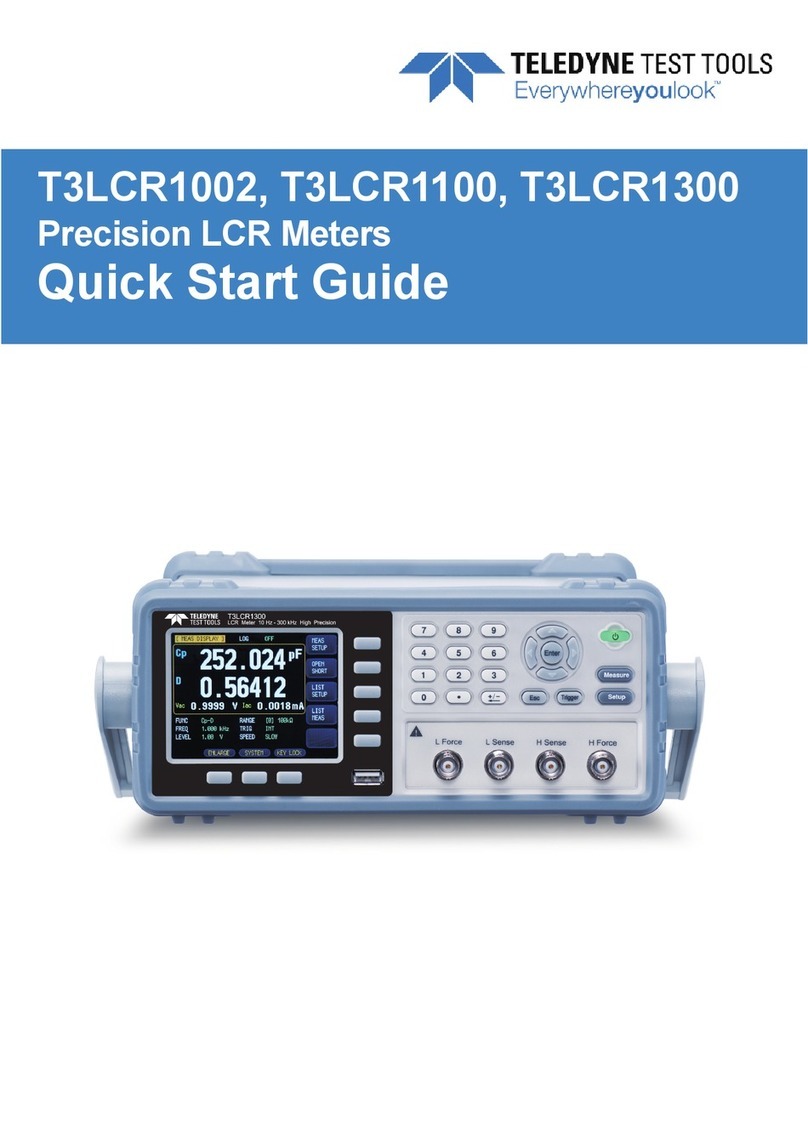
Teledyne
Teledyne T3LCR1002 quick start guide
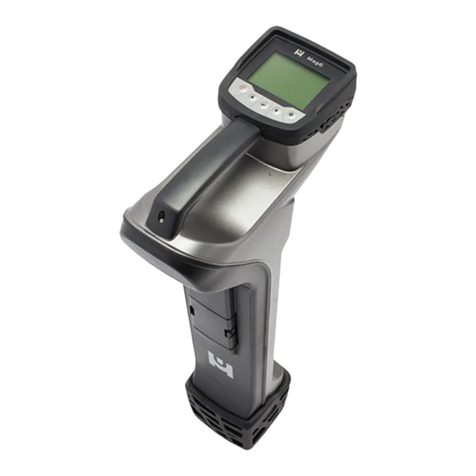
Underground Magnetics
Underground Magnetics Mag 6 Series Getting started
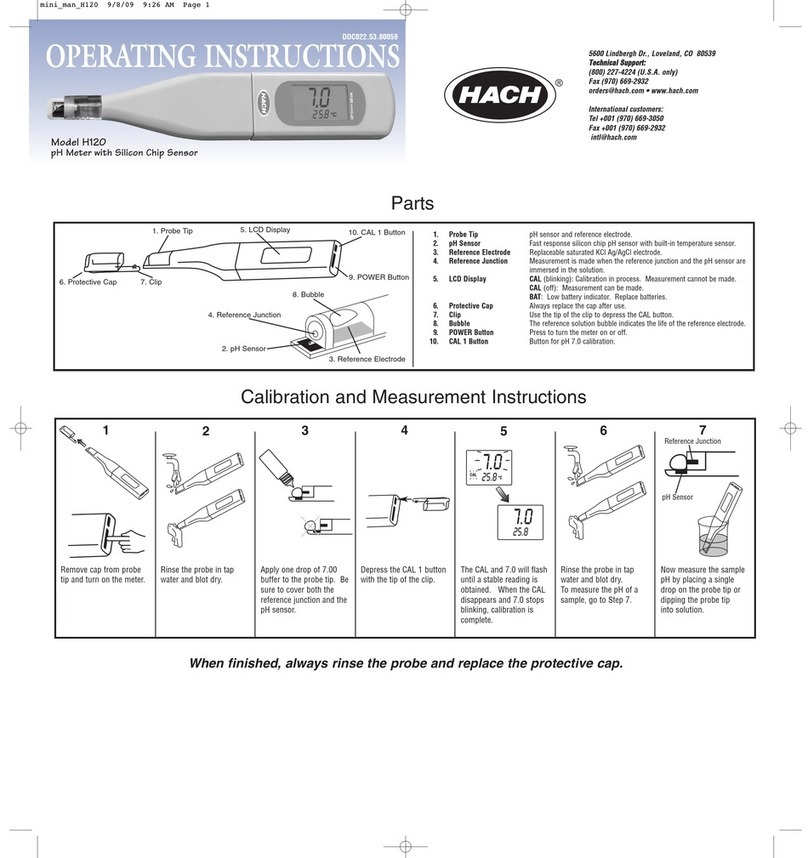
Hach
Hach H120 operating instructions
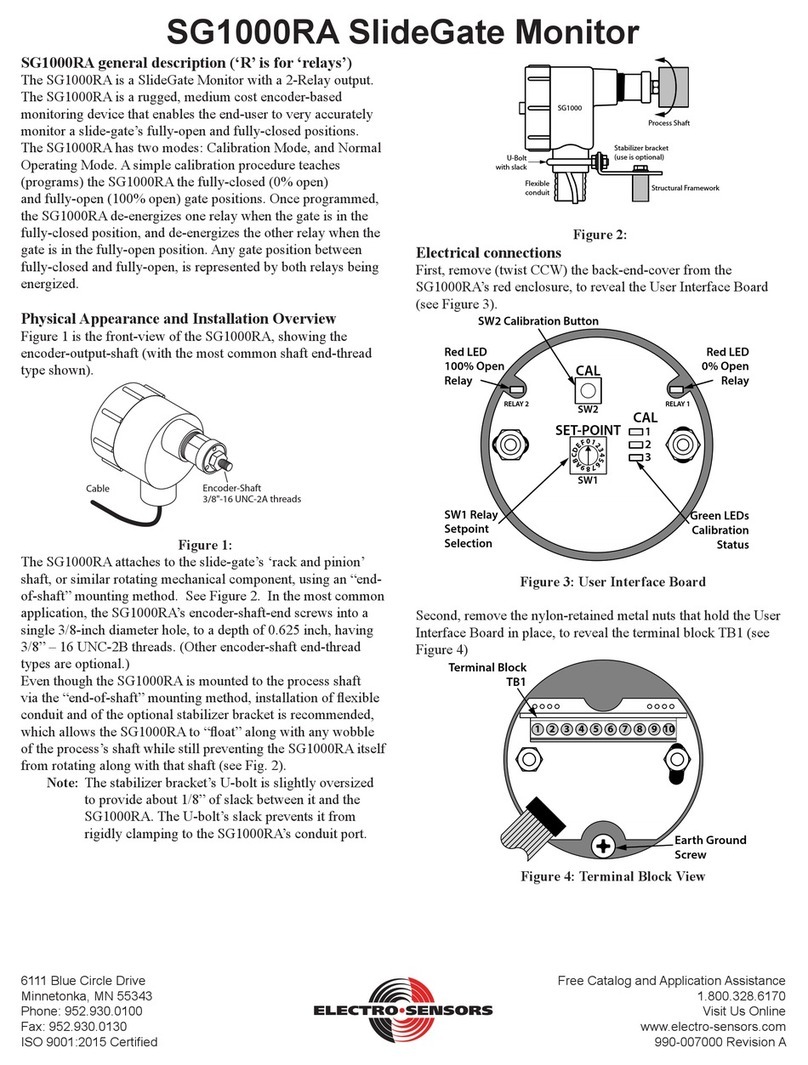
Electro-Sensors
Electro-Sensors SG1000RA user manual
